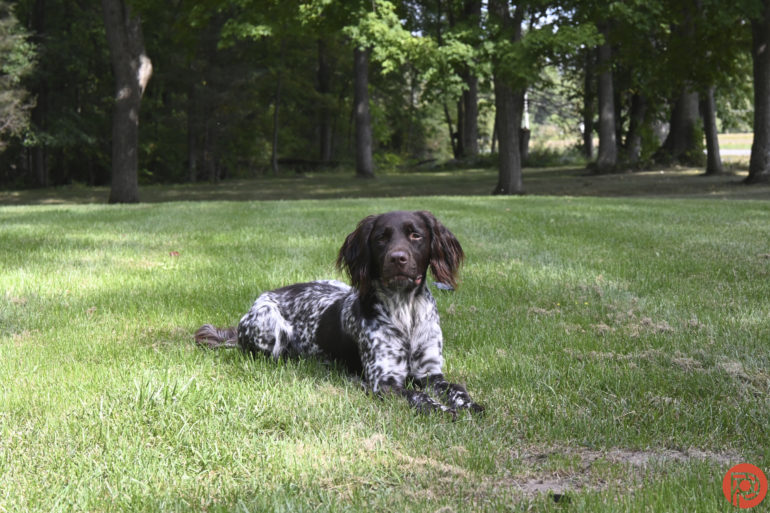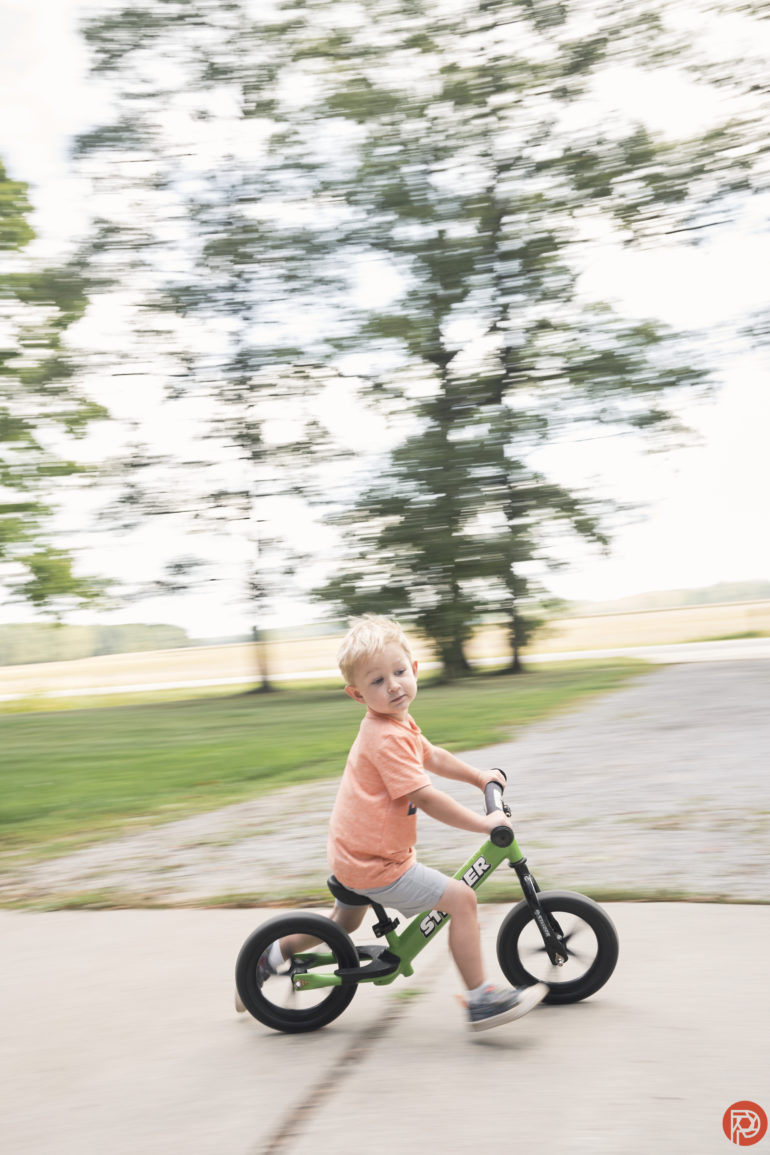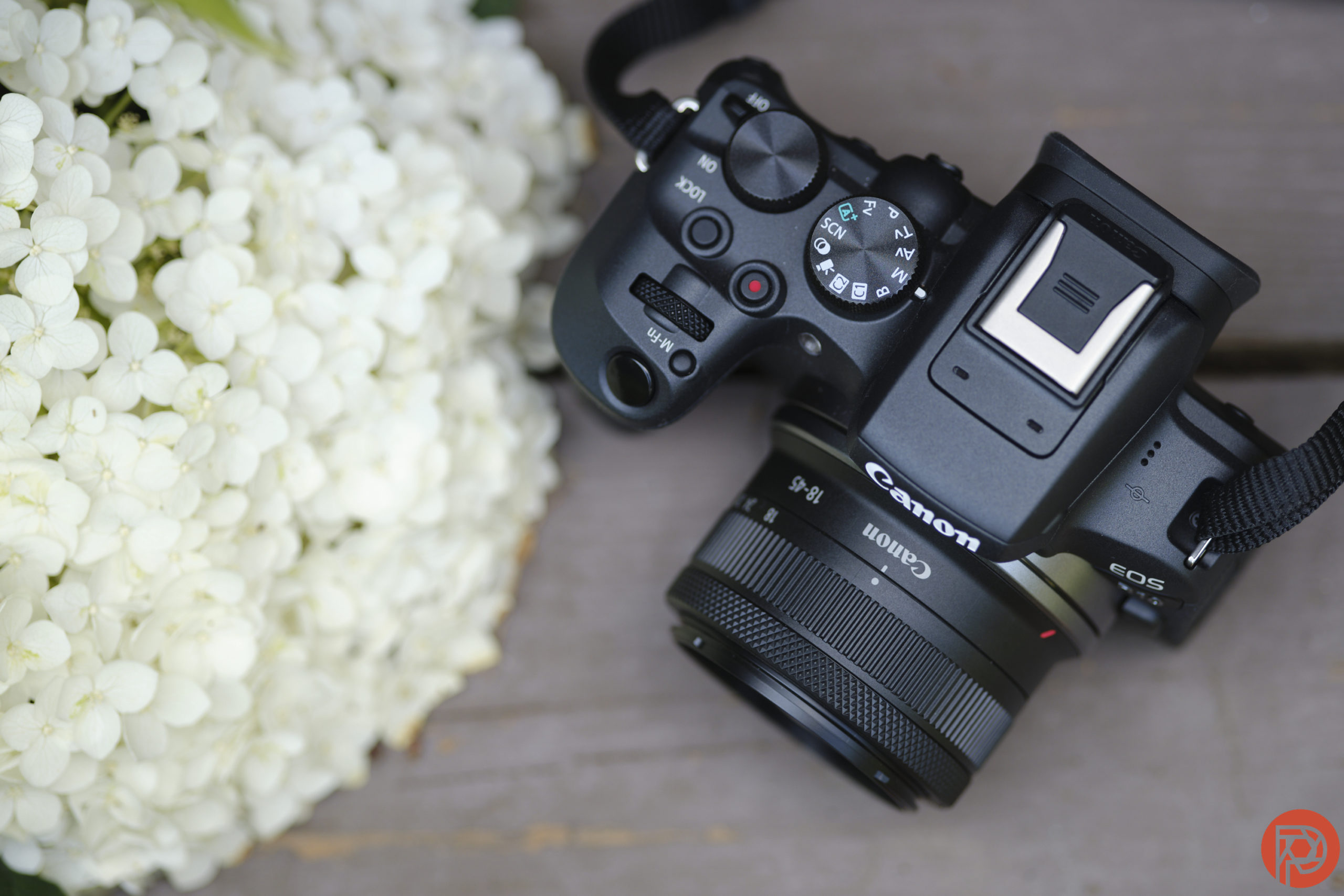There are tons of fantastic cameras on the market. And if anything, that’s the thing. No one makes a bad camera. They’re all more than capable of doing everything that you need them to do. However, some are much better than others out there. So if you’re considering the best cameras while being on a budget, then take a look at these.
Table of Contents
Pro Tips About the Best Cameras for Beginners
Here are some tips on using this guide on the best cameras for beginners.
- The Phoblographer’s various product round-up features are done in-house. Our philosophy is simple: you wouldn’t get a Wagyu beef steak review from a lifelong vegetarian. And you wouldn’t get photography advice from someone who doesn’t touch the product. We only recommend gear we’ve fully reviewed in these roundups.
- If you’re wondering why your favorite cameras didn’t make the cut, there’s a chance it’s on another list. If we haven’t reviewed it, we won’t recommend it. This method keeps our lists packed with industry-leading knowledge. Some of our stories include affiliate links. If you buy something through one of these links, we may earn an affiliate commission.
- What makes these cameras for beginners? Well, they’re at a certain price point. They’re also considered to be easier to use if you’re new to photography. At the same time, they’ll teach you about the art form while not giving you the same features the professional and passionate photographers pay for.
- None of these cameras have full weather resistance. So keep that in mind. You’ll need to be careful when using them.
- Use face and eye detection. Trust us; you’ll thank us later.
- You can connect these cameras to your smartphone via Bluetooth or Wifi.
- Adjust the diopter on your viewfinder if you wear glasses. That will make it easier to use with these cameras.
Canon R10: Let Your Love of Cameras Bud
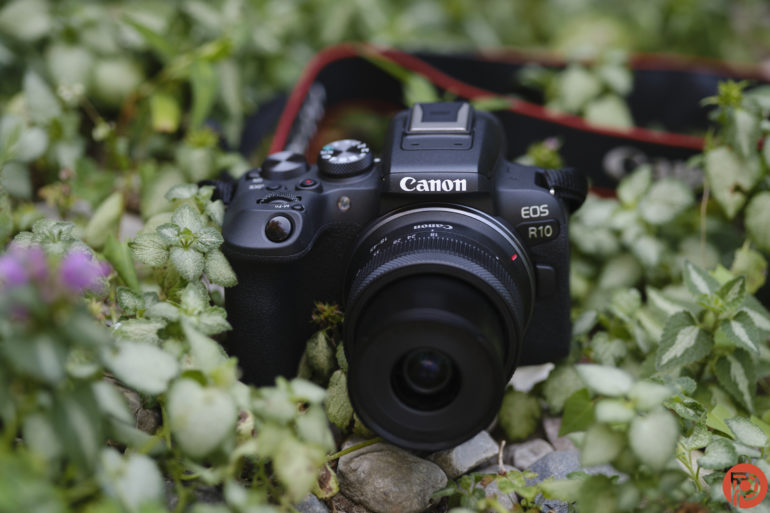
PROS
- Beginner-friendly controls, yet also still has two control dials and a joystick
- Compact, yet has a comfortable grip
- Smart autofocus system with great animal and human eye AF
- Fast burst speeds
- Solid image quality in good light
CONS
- No weather-sealing
- No in-body stabilization
- Autofocus struggles in low light and uneven light with exposure preview on
- ISOs above 3200 are pretty noisy
Tech Specs
Lensrentals lists the following specifications for the Canon EOS R10:
- Brand: Canon
- Camera Type: Mirrorless
- Environmental
- Operating Temperature: 32 to 104°F
- Operating Humidity: 0 to 85%
- Exposure Control
- Shutter Type: Electronic Shutter, Mechanical Focal Plane Shutter
- Mechanical Shutter Speed: 1/4000 to 30 Seconds
- Electronic Shutter Speed: 1/4000 to 30 Seconds
- Bulb/Time Mode: Bulb Mode
- ISO Sensitivity (Photo): 100 to 32,000 in Manual, Auto Mode (Extended: 100 to 51,200)
- Metering Method: Center-Weighted Average, Evaluative, Partial, Spot
- Exposure Modes: Aperture Priority, Manual, Program, Shutter Priority
- Exposure Compensation: -3 to +3 EV (1/3, 1/2 EV Steps)
- Metering Range: -2 to 20 EV
- White Balance: Presets: Auto, Cloudy, Color Temperature, Custom, Daylight, Flash, Fluorescent (White), Shade, Tungsten
- Continuous Shooting (Electronic Shutter): Up to 23 fps at 24.2 MP for up to 70 Frames (JPEG) / 21 Frames (RAW)
- Continuous Shooting (Mechanical Shutter): Up to 15 fps at 24.2 MP for up to 460 Frames (JPEG) / 29 Frames (RAW)
- Interval Recording: Yes
- Self-Timer: 2/10-Second Delay
- External Video Capture: IP Streaming Yes
- Flash
- Built-In Flash: Yes
- Guide Number: 19.7’ / 6m at ISO 100
- Maximum Sync Speed: 1/250 Second
- Flash Compensation: -3 to +3 EV (1/3, 1/2 EV Steps)
- Dedicated Flash System: eTTL
- External Flash Connection: Hot Shoe
- Focusing
- Focus Type: Auto and Manual Focus
- Focus Mode: Continuous-Servo AF, Manual Focus, Single-Servo AF
- Autofocus Points (Photo, Video): Phase Detection: 651
- Autofocus Sensitivity: -4 to +20 EV
- Battery Type: 1x LP-E17 Rechargeable Lithium-Ion
- Tripod Mounting Thread: 1x 1/4″-20 Female (Bottom)
- Dimensions (W x H x D): 4.8 × 3.5 × 3.3″
- Weight: 0.8 lb. (Body Only); 0.9 lb. (Body with Battery and Memory Card)
- Imaging
- Lens Mount: Canon RF
- Sensor Resolution
- Actual: 25.5 Megapixel
- Effective: 24.2 Megapixel
- Sensor Type: 22.3 × 14.9 mm (APS-C) CMOS
- Crop Factor: 1.6x
- Image Stabilization: Digital (Video Only)
- Built-In ND Filter: None
- Capture Type: Stills & Video
- Interface
- Memory Card Slot: Single Slot: SD/SDHC/SDXC (UHS-II)
- Video I/O: 1x Micro-HDMI Output
- Audio I/O: 1x 1/8″ / 3.5 mm TRS Stereo Microphone Output
- Other I/O: 1x USB Type-C (USB 2.0) Input/Output
- Wireless: 2.4 GHz Wi-Fi (802.11b/g); Bluetooth
- Global Positioning (GPS, GLONASS, etc.): None
- Internal Video Capture H.264/MP4 4:2:0 8-Bit Recording Modes
- UHD 4K (3840 × 2160) at 23.98p/25p/29.97p/59.94p
- Full HD (1920 × 1080) at 23.98p/25p/29.97p/50p/59.94p/100p/119.88p
- H.265/MP4 4:2:2 10-Bit Recording Modes
- UHD 4K (3840 × 2160) at 23.98p/25p/29.97p/50p/59.94p
- Full HD (1920 × 1080) at 23.98p/25p/29.97p/50p/59.94p/100p/119.88p
- Gamma Curve: HDR-PQ
- Video System: NTSC/PAL
- Built-In Microphone Type: Stereo
- Audio Recording: MP4: 2-Channel AAC Audio
- Monitor: 3.0”, 1,040,000 Dot,Free-Angle Tilting Touchscreen LCD
- Mount: Canon RF
- Still Image Capture
- Aspect Ratio: 1:1, 3:2, 4:3, 16:9
- Image File Format: C-RAW, HEIF, JPEG, RAW
- Viewfinder: Built-In Electronic (OLED), 2,360,000 Dot, 22mm eye point with 100 percent coverage and .95x magnification
What We Think
In our review, we state:
The Canon EOS R10 delivers a set of controls that’s simultaneously beginner-friendly and still enough for serious hobbyists. The design is comfortable and easy to navigate. The process of taking pictures of people and animals is also much improved over a Rebel with a very smart eye detection autofocus. Even the 15 fps burst speed feels better than most budget cameras. Images feel similar to a Rebel, with good colors and sharpness.
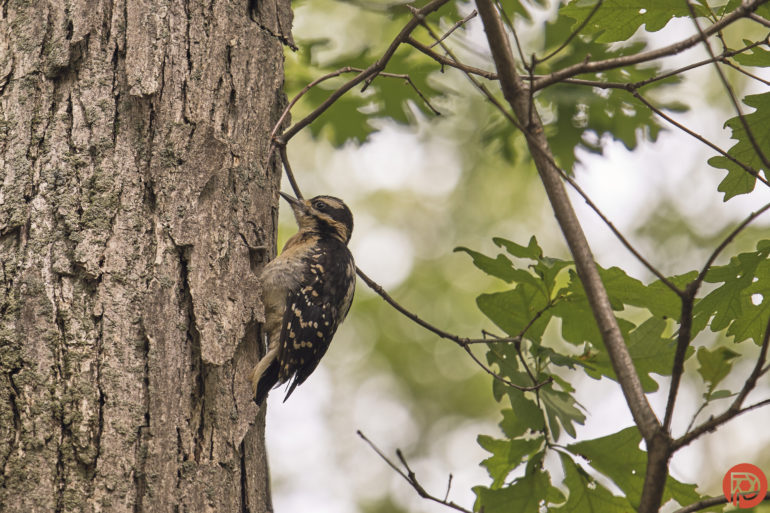
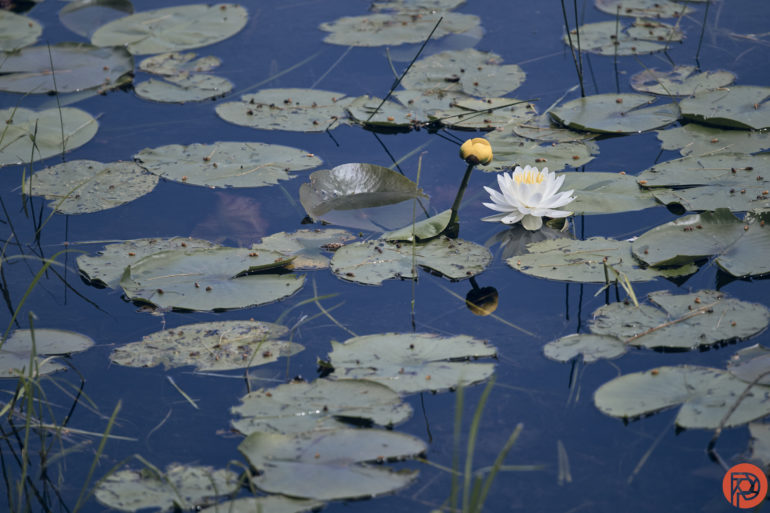
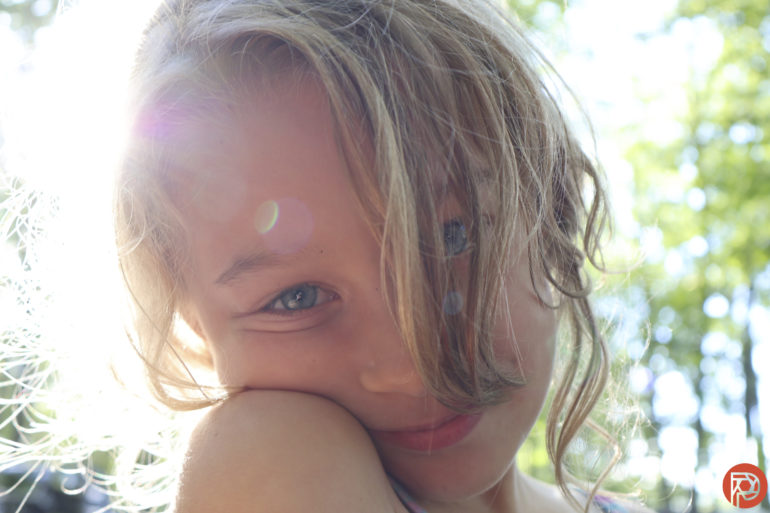
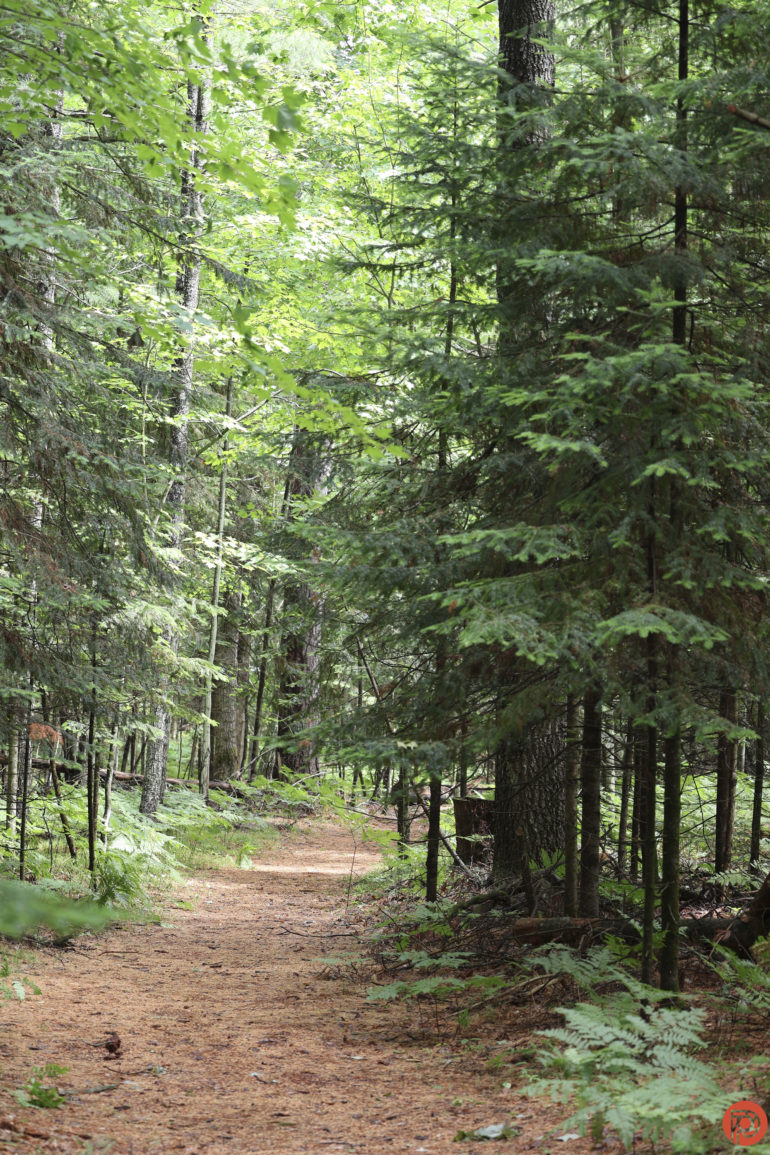
Canon R50: One of the Most Functional Cameras
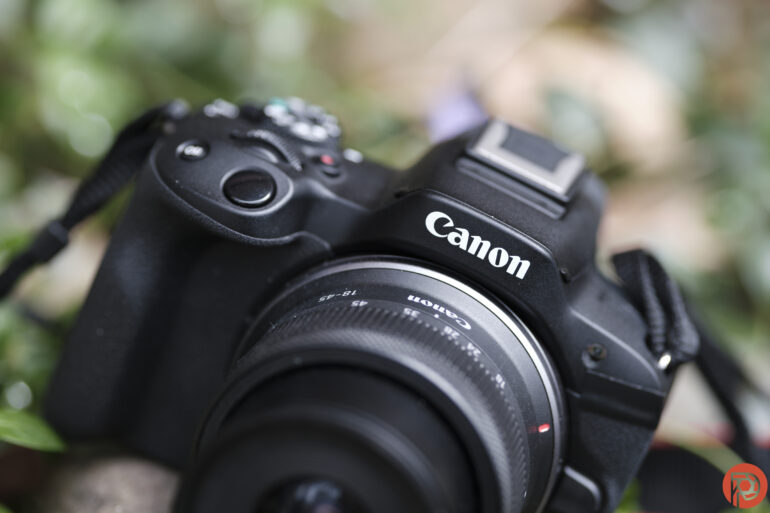
PROS
- Affordable
- Intelligent subject detection autofocus is pretty great
- Easy to use
- Customizable auto mode
- Comfortable viewfinder and nice flippy screen
- Lightweight design
CONS
- Electronic shutter only
- Older tech means images get noisy faster
- No image stabilization
- No weather-sealing
- Ergonomics are lacking for manual shooting, including no second control wheel or joystick
- Not compatible with UHS-II, which slows performance significantly
- Buffer is limited to just 7 RAW photos in row
Tech Specs
LensRentals lists the following specifications for the Canon EOS R50:
- Brand: Canon
- Camera Type: Mirrorless
- Environmental
- Operating Temperature: 32 to 104°F
- Operating Humidity: 0 to 85% (Recommended)
- Exposure Control
- Shutter Type: Electronic Shutter
- Electronic Shutter Speed: 1/8000 Up to 30 Seconds
- Electronic Front Curtain Shutter Speed: 1/4000 Up to 30 Seconds
- Bulb/Time Mode: Bulb Mode, Time Mode
- Photo/Video ISO Sensitivity: 100 to 32,000 (Extended: 51,200)
- Metering Method: Center-Weighted Average, Evaluative, Partial, Spot
- Exposure Modes: Aperture Priority, Manual, Program, Shutter Priority
- Exposure Compensation: -3 to +3 EV (1/3 EV Steps)
- Metering Range: -2 to 20 EV
- White-Balance Presets: Auto, Cloudy, Color Temperature, Custom, Daylight, Flash, Fluorescent (White), Shade, Tungsten
- Continuous Shooting – Silent Electronic Shutter: Up to 15 fps for up to 28 Frames (JPEG) / 7 Frames (RAW)
- Continuous Shooting – Silent Electronic First-Curtain Shutter: Up to 12 fps for up to 42 Frames (JPEG) / 7 Frames (RAW)
- Interval Recording: Yes
- Self-Timer: 2/10-Second Delay
- Flash
- Built-In Flash: Yes
- Maximum Sync Speed: 1/250 Second
- Flash Compensation: -3 to +3 EV (1/3 EV Steps)
- Dedicated Flash System: eTTL
- External Flash Connection: Intelligent Hot Shoe
- Focusing
- Focus Type: Auto and Manual Focus
- Focus Mode: Continuous-Servo AF, Manual Focus, Single-Servo AF
- Autofocus Points – Photo, Phase Detection: 4503
- Autofocus Points – Video, Phase Detection: 3713
- Autofocus Sensitivity: -4 to +20 EV
- General
- Battery Type: 1x LP-E17 Rechargeable Lithium Polymer, 7.2 VDC, 1040 mAh
- Tripod Mounting Thread: 1x 1/4″-20 Female (Bottom)
- Dimensions (W x H x D): 4.6 × 3.4 × 2.7″
- Weight: 0.8 lb. (With Battery, Recording Media) 0.7 lb. (Body Only)
- Imaging
- Sensor Resolution Effective: 24.2 Megapixel
- Sensor Type: 22.3 × 14.9mm (APS-C) CMOS
- Crop Factor: 1.6x
- Image Stabilization: None
- Built-In ND Filter: None
- Capture Type: Stills & Video
- Interface: Media/Memory Card Slot
- Single Slot: SD/SDHC/SDXC
- Video I/O: 1x Micro-HDMI Output
- Audio I/O: 1x 1/8″ / 3.5mm TRS Stereo Microphone Input on Camera Body
- Other I/O: 1x USB-C Input/Output
- Wireless: 2.4 / 5 GHz Bluetooth 4.2 Control
- Wi-Fi Mobile App Compatible: Yes
- Global Positioning (GPS, GLONASS, etc.): None
- Item Type: Camera
- Mfr. Model Number 5811C002
- Monitor
- Size: 3”
- Resolution: 1,062,000 Dot
- Display Type: Articulating Touchscreen LCD
- Mount: Canon RF
- Still Image Capture
- Aspect Ratio: 3:2
- Image File Format: C-RAW, HEIF, JPEG, RAW
- Video Capture
- Internal Recording Modes: H.264/H.265/MPEG-4
- UHD 4K (3840 × 2160) at 23.98/25/29.97 fps
- 1920 × 1080 at 23.98/25/29.97/50/59.94/100/120 fps
- Broadcast Output: NTSC/PAL
- Built-In Microphone Type: Stereo
- Viewfinder
- Type: Built-In Electronic (OLED)
- Size: 0.39”
- Resolution: 2,360,000 Dot
- Eye Point: 22mm
- Coverage: 100%
- Magnification: Approx. 96x
- Diopter Adjustment: -3 to +1
What We Think
In our review, we state:
While the mix of intelligent autofocus and a $680 price point may be more than enough reasons for some to pick up the R50, there are several big sacrifices. It uses an older sensor design that quickly loses detail when lighting isn’t ideal. The card reader is also old tech, which slows the ability to take photos in quick succession. It lacks weather-sealing to prevent dust build-up. It even lacks an actual, physical shutter. The R50 also skips out on in-body stabilization. And once newbies do learn manual modes, the small size limits the number of physical controls.
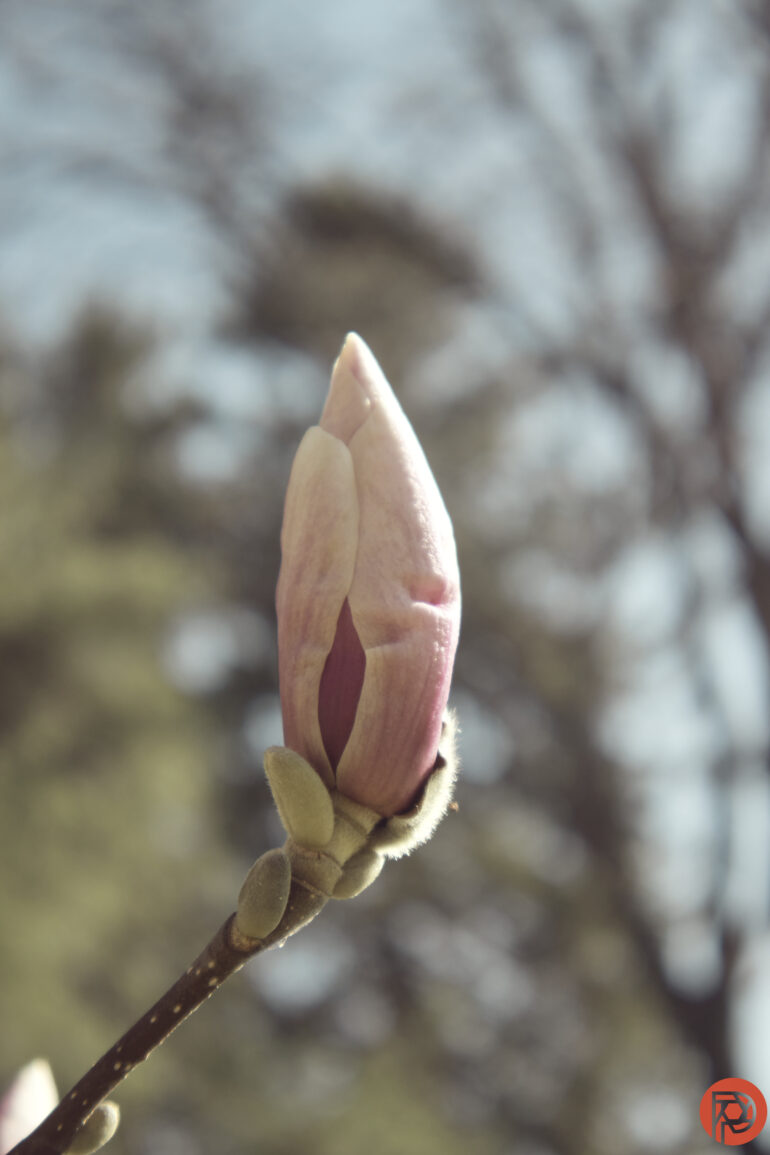
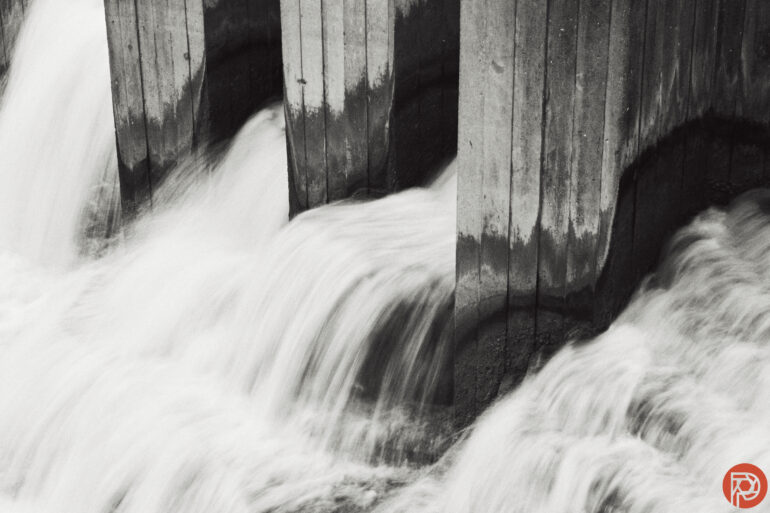
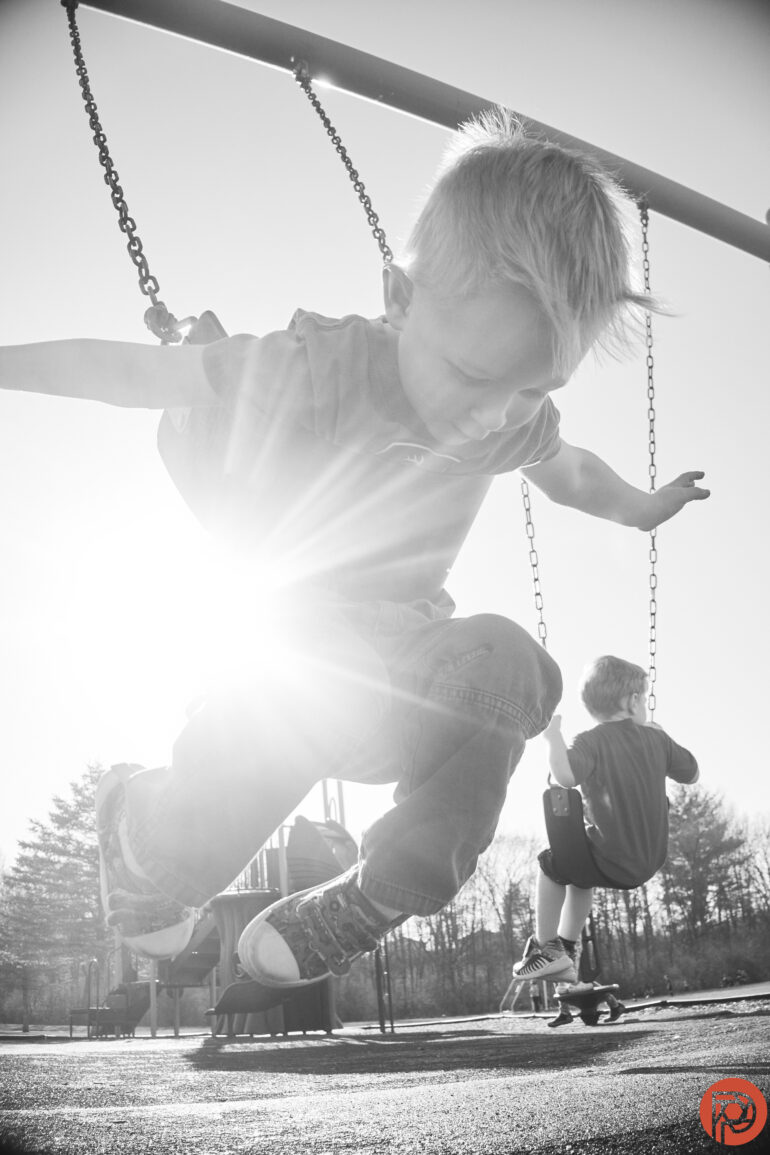
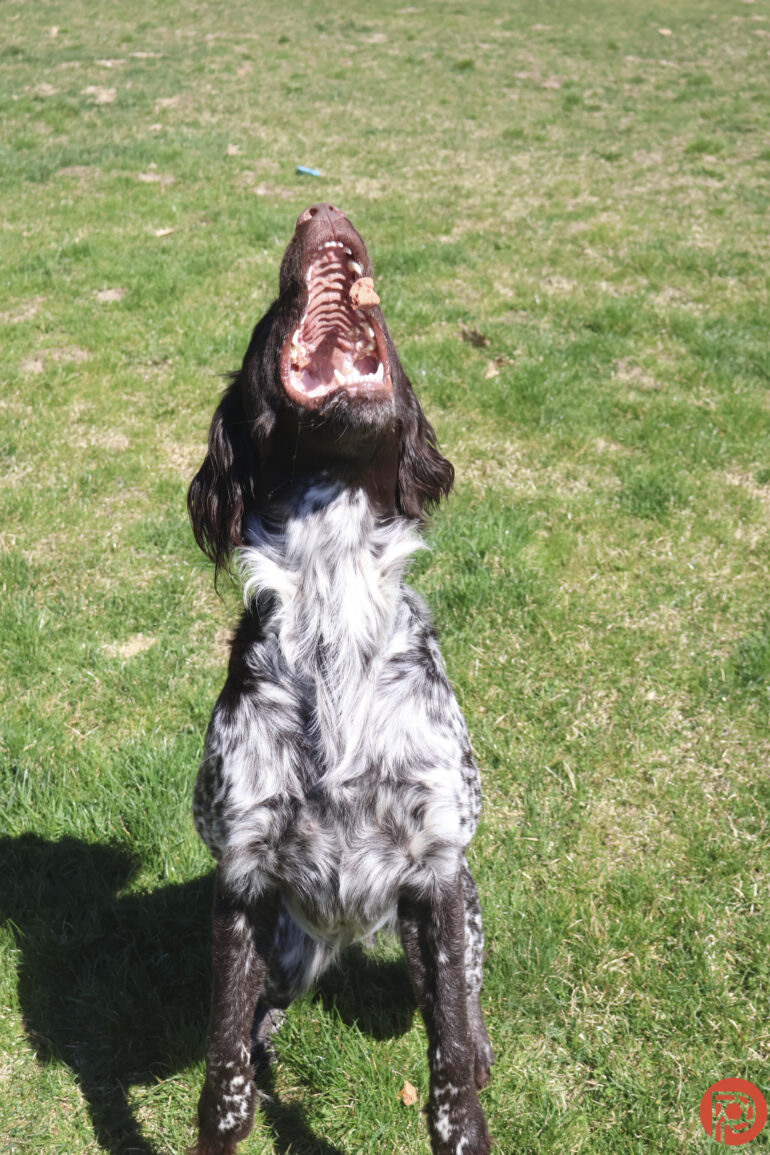
Nikon ZFc: One of the Most Stylish Cameras
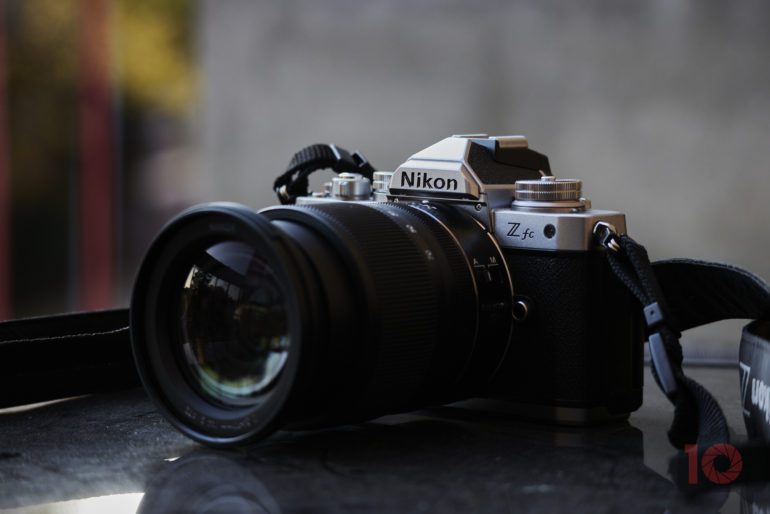
PROS
- Light, though almost to the point of feeling cheap at times
- Small, and needs a small lens to take the most advantage of this
- Focuses pretty quickly
- A bit of weather sealing
- Excellent high ISO output for an APS-C sensor
- Good image quality
- Looks nice
- I kind of like the shutter sound
- Pretty affordable
CONS
- Nikon made this camera feel sort of incredibly amateur while trying not to be at the same time.
- Why no joystick?
- I wish it had dual card slots
- Screen feels a bit cheap
- The camera sounds a bit hollow in places
- A lack of a serious thumb rest is infuriating
- Very sensitive EVF. A raindrop got on it and it thought my eye was there the entire time even though the drop wasn’t on the eye sensor.
- Mode switch can be knocked out of place way too easily
- Shooting events? The lack of image stabilization can possibly make you lose really great shots.
- Focus tracking isn’t all that fantastic
- Animal AF sadly doesn’t work on horses
- Slow autofocus at times
- It doesn’t feel like a classic Nikon camera
- Nikon needs to work with Tamron to get some premium APSC zoom lenses
- There are better cameras for more money
Tech Specs
Taken from the Nikon USA website
- 20.9 megapixels
- DX (APS-C) format sensor
- SD (Secure Digital) and UHS-I compliant SDHC and SDXC memory cards slots
- ISO 100 – 51,200 native range
- 30s to 1/4000s shutter speed range
- 209 auto focus points
- –3 to +3 EV (–5 to +5 EV when the exposure compensation dial is set to [c])
- X=1/200 sec flash sync speed. Auto FP High-Speed sync supported
- 2360k-dot (XGA) OLED electronic viewfinder with 100% coverage
- 3 inch, 1036K dots, fully articulating touchscreen LCD
- Hybrid phase-detection/contrast AF with AF assist
- Wide Area AF, and Auto Area AF for People and Animals
- Inbuilt Wi-Fi IEEE 802.11b/g/n/a/ac capable
- Bluetooth support
- 14.0 oz. (390 g) body weight
What We Think
In our review, we state:
The Nikon ZFc reminds me of modern dating for the man who wants to spend the rest of his life with someone. The Nikon ZFc suddenly appeared in front of all of us, strutting around and bedazzling our eyes. That small-spoon stature and those alluring looks can appease any photographer craving a compact, high-performance camera. The tech specs are just standard, but you decide to give it a try. It can’t hurt, right? But the real-life experience is something different. And in some ways, you end up feeling catfished. Nikon says it’s lightweight, but it feels a bit cheap in places. Ultimately, you end up realizing you’re worth more than that, and you call it off. In the end, just swipe left on the Nikon ZFc. However, I hope Nikon realizes its mistakes and doesn’t play around with a full-frame variant.
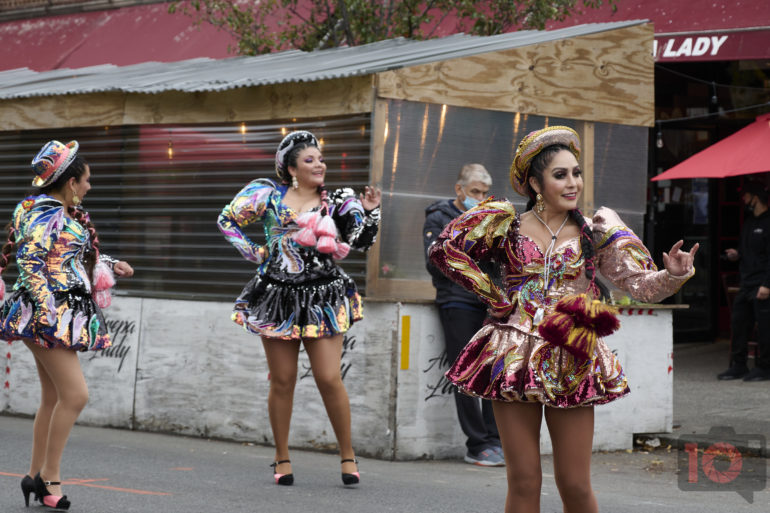



Nikon Z30: One of the Best Cameras for Vlogging
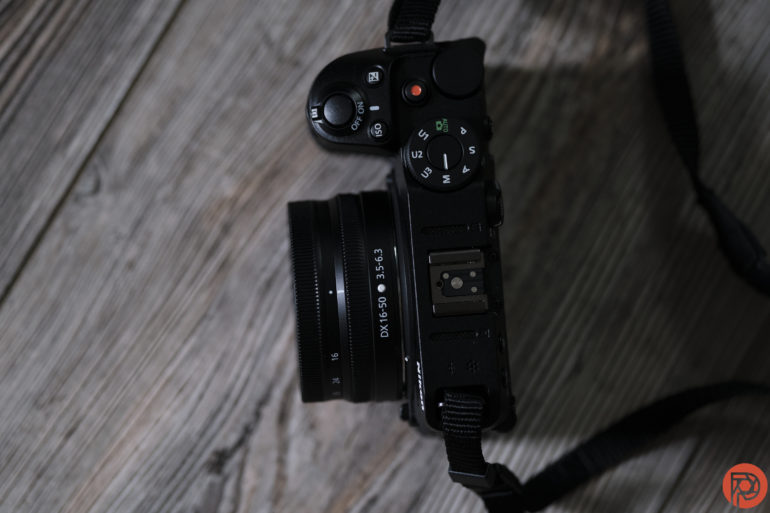
PROS
- Super compact
- Affordable
- Comfortable grip
- Dual control wheels
- Eye AF
- Excellent noise reduction at high ISOs
- Simpler menus and dials
- Finally, weather sealing in a budget camera!
- The build feels great and less plasticky than other budget cameras.
CONS
- No viewfinder
- No in-body stabilization
- Slower autofocus performance
- Shutter speed tops out at 1/4000
- 300 shot battery life
Tech Specs
Nikon USA lists the following specifications for the Z30:
- Type
- Digital camera with support for interchangeable lenses
- Lens Mount: Nikon Z mount
- Image Sensor
- Effective Pixels: 20.9 million
- Sensor Size: 23.5 mm x 15.7 mm
- Image Sensor Format: DX
- Image Sensor Type: CMOS sensor
- Total Pixels: 21.51 million
- Dust-Reduction System: Image Dust Off reference data (NX Studio software required)
- Image Area (pixels):
- DX-format, (L) 5,568 x 3,712, (M) 4,176 x 2,784, (S) 2,784 x 1,856
- 1:1 (16 x 16): (L) 3,712 x 3,712, (M) 2,784 x 2,784, (S) 1,856 x 1,856, 16:9 (36 x 20), (L) 5,568 x 3,128, (M) 4,176 x 2,344, (S) 2,784 x 1,560
- Photographs taken during movie recording at a frame size of 3,840 x 2,160:
- 3,840 x 2,160 Photographs taken during movie recording at other frame sizes: 1,920 x 1,080:1,920 x 1,080
- File System
- File Format Still Images: NEF (RAW): 12 or 14 bit
- JPEG: JPEG-Baseline compliant with fine (approx. 1:4), normal (approx. 1:8), or basic (approx. 1:16) compression
- NEF (RAW) + JPEG: Single photograph recorded in both NEF (RAW) and JPEG formats
- Storage Media: SD (Secure Digital) and UHS-I compliant SDHC and SDXC memory cards
- File System: DCF 2.0, Exif 2.31
- Viewfinder: None
- Shutter
- Shutter Type: Electronically-controlled vertical-travel focal-plane mechanical shutter; electronic front-curtain shutter; electronic shutter
- Shutter Speed: 1/4000 – 30 sec. (step of 1/3 EV), bulb, time
- Flash Sync Speed: Up to: X=1/200 sec.; synchronizes with shutter at 1/200 sec. or slower; Auto FP High-Speed sync supported
- Top Continuous Shooting Speed at Full Resolution: 11 frames per second
- Top Continuous Shooting Speeds: 11 frames per second
- Exposure
- Exposure Metering System: TTL metering using camera image sensor
- Metering Range: Spot metering: -4 to +17 EV
- Exposure Compensation: –5 – +5 EV, Increment of 1/3 EV
- Exposure Lock: Luminosity locked at detected value
- Picture Control: Auto, Flat, Landscape, Monochrome, Neutral, Portrait, Standard, Vivid
- Creative Picture Controls: (Dream, Morning, Pop, Sunday, Somber, Dramatic, Silence, Bleached, Melancholic, Pure, Denim, Toy, Sepia, Blue, Red, Pink, Charcoal, Graphite, Binary, Carbon). Selected Picture Control can be modified. Storage for custom Picture Controls
- Multiple Exposure: Yes; Add; Average; Lighten; Darken
- Sensitivity
- ISO Sensitivity ISO 100 – 51,200 in steps of 1/3 EV
- Can also be set to approx. 1 EV above ISO 51200 (ISO 102400 equivalent) or to approx. 2 EV above ISO 51200 (ISO 204800 equivalent)
- Auto ISO sensitivity control available
- Active D-Lighting
Can be selected from: Auto, Extra High, High, Normal, Low, Off - Active D-Lighting Bracketing: Yes
- Focus/Autofocus
- Autofocus System: Hybrid phase-detection/contrast AF
- Detection Range: -4.5 to +19 EV (without low-light AF: -3 to +19 EV)
- Measured in photo mode at ISO 100 and a temperature of 20 °C/68 °F using single-servo AF (AF-S) and a lens with a maximum aperture of f/1.8
- Lens Servo: Autofocus (AF): Single-servo AF (AF-S); continuous-servo AF (AF-C); AF mode auto-switch (AF-A; available only in photo mode); full-time AF (AF-F; available only in movie mode); predictive focus tracking
- Manual focus (M): Electronic rangefinder can be used
- Focus Point: 209 (single-point AF)
- Number of focus points available in photo mode with single-point AF selected for AF-area mode and DX selected for image area
- AF-Area Mode: Pinpoint, Single-Point, Dynamic-area AF, Wide-area AF (S), Wide-area AF (L), Wide-area AF (L-people), Wide-area AF (L-animals), Auto-area AF, Auto-area AF (people), Auto-area AF (animals)
- Focus Lock: Yes
- Flash
- Flash Control: TTL: i-TTL flash control; i-TTL balanced fill-flash is used with matrix, center-weighted, and highlight-weighted metering, standard i-TTL fill-flash with spot metering
- Flash Sync Modes: Front-curtain sync, Rear-curtain sync, Red-eye reduction, Red-eye reduction with slow sync, Slow sync, Off
- Flash-ready Indicator
Lights when optional flash unit is fully charged; flashes as underexposure warning after flash is fired at full output
- Accessory Shoe: ISO 518 hot-shoe with sync and data contacts and safety lock
- Nikon Creative Lighting System (CLS): i-TTL flash control, optical Advanced Wireless Lighting, FV lock, Color Information Communication, Auto FP High-Speed Sync
- White Balance
- White Balance: Auto (3 types), Choose color temperature (2,500 K–10,000 K), Cloudy, Direct sunlight, Flash, Fluorescent (3 types), Incandescent, Natural light auto, Preset manual (up to 6 values can be stored), all except choose color temperature with fine-tuning, Shade
- White Balance Bracketing: Yes
- Movie
- Movie Metering : TTL exposure metering using main image sensor
- Movie Maximum Recording Time: Up to 125 minutes
- Movie File Format: MOV, MP4
- Movie Video Compression: H.264/MPEG-4 Advanced Video Coding
- Movie Audio Recording Format: Linear PCM, AAC
- Movie: 4K UHD 3,840 × 2,160 /30p/25p/24p
- Full HD 1,920 x 1,080 /120p/100p/60p/50p/30p/25p/24p
- Actual frame rates for 120p, 100p, 60p, 50p, 30p, 25p, and 24p are 119.88, 100, 59.94, 50, 29.97, 25, and 23.976 fps respectively
- Quality selection (normal/m) available at all sizes except 3840 × 2160, 1920 × 1080 120p/100p, and 1920 × 1080 slow-motion, when quality is fixed at m
- Movie Audio: Built-in stereo or external microphone with attenuator option; sensitivity can be adjusted
- Movie ISO: Auto ISO sensitivity control (ISO 100 to 25,600); M: Manual selection (ISO 100 to 25,600 in steps of 1/3 or 1/2 EV); auto ISO sensitivity control (ISO 100 to 25,600) available with selectable upper limit, Auto ISO sensitivity control (ISO 100–25600)
- Movie Active D-Lighting Can be selected from: Auto, Extra High, High, Normal, Low, Off
- Time Code: Yes
- Movie e-VR: Yes
- Movie HDMI Output: Yes
- Movie Focus Peaking: Yes
- Movie Highlight Display (Zebras): Yes
- Time-Lapse Movie: Yes
- AF for Movie: Yes
- Monitor
- Monitor Size: 3.0 in. diagonal
- Monitor Resolution: 1040 k dots
- Monitor Type: Vari-angle TFT touch-sensitive LCD with 170° viewing angle, approximately 100% frame coverage
- Color balance and 11-level manual brightness controls
- Playback: Playback Functions, Full-frame and thumbnail (4, 9, or 72 images or calendar), Highlights, Histogram Display, Location Data Display, Movie Playback, Photo and/or Movie Slide Shows
- Photo Information, Picture Rating, Playback with Playback Zoom, Playback Zoom Cropping, Photo and/or video slide shows
- Interface
- Interface USB: Type C USB connector (SuperSpeed USB); connection to built-in USB port is recommended
- Type D HDMI connector; Stereo mini-pin jack (3.5 mm diameter; plug-in power supported)
- Wi-Fi Functionality
- Standards: IEEE 802.11b/g/n (Africa, Asia, Bolivia, and Oceania)
- Standards: IEEE 802.11b/g/n/a/ac (Europe, U.S.A., Canada, Mexico)
- Standards: IEEE 802.11b/g/n/a (other countries in the Americas)
- Operating frequency: 2412–2462 MHz (channel 11; Africa, Asia, Bolivia, and Oceania)
- Operating frequency: 2412–2462 MHz (channel 11) and 5180–5805 MHz (other countries in the Americas)
- Operating frequency: 2412–2462 MHz (channel 11) and 5180–5825 MHz (U.S.A., Canada, Mexico)
- Authentication: Open system, WPA2-PSK
- Maximum output power (EIRP):
- 2.4 GHz band: 4.5 dBm
- 5 GHz band: 6.8 dBm (countries in the Americas)
- Smart Device App Connectivity: SnapBridge
- Bluetooth: Communication protocols: Bluetooth Specification
- Version 4.2
- Operating frequency: Bluetooth: 2402–2480 MHz
- Bluetooth Low Energy: 2402–2480 MHz
- Maximum output power (EIRP)
- Bluetooth –1.0 dBm
- Bluetooth Low Energy: –2.5 dBm
- Menus
- Supported Languages: English, French, Portuguese (Brazil), Spanish
- Power
- Battery / Batteries: One EN-EL25 rechargeable Li-ion battery
- Battery Life (shots per charge): 330 shots (CIPA)
- Movies: Approx. 75 min. of movie recording
- AC Adapter: EH-7P charging AC adapter (available separately)
- Battery Charger: MH-32 Battery Charger (available separately)
- Miscellaneous
- Tripod Socket: 1/4 in. (ISO 1222)
- Approx. Dimensions (Width x Height x Depth): 5.1 in. (128 mm) x 2.9 in. (73.5 mm) x 2.4 in. (59.5 mm)
- Approx. Weight: 12.4 oz. (350 g)
- Operating Environment: Temperature 0 °C–40 °C (+32 °F–104 °F)
- Humidity: Less than 85% (no condensation)
What We Think
In our review, we state:
The Nikon Z30 is so small it resembles an oversized point-and-shoot camera. Compact size, $709 price point, and excellent image quality in low light are three strong reasons to consider this camera. It also has some weather sealing and doesn’t feel as plastic-fantastic as other budget models. It has a wealth of features for vlogging and video, but doesn’t slack when it comes to stills. Images from the Z30 are great for this price point. In particular, images in low light are quite impressive. The controls and menus are newbie-friendly, and the grip will make even DSLR die-hards happy.

